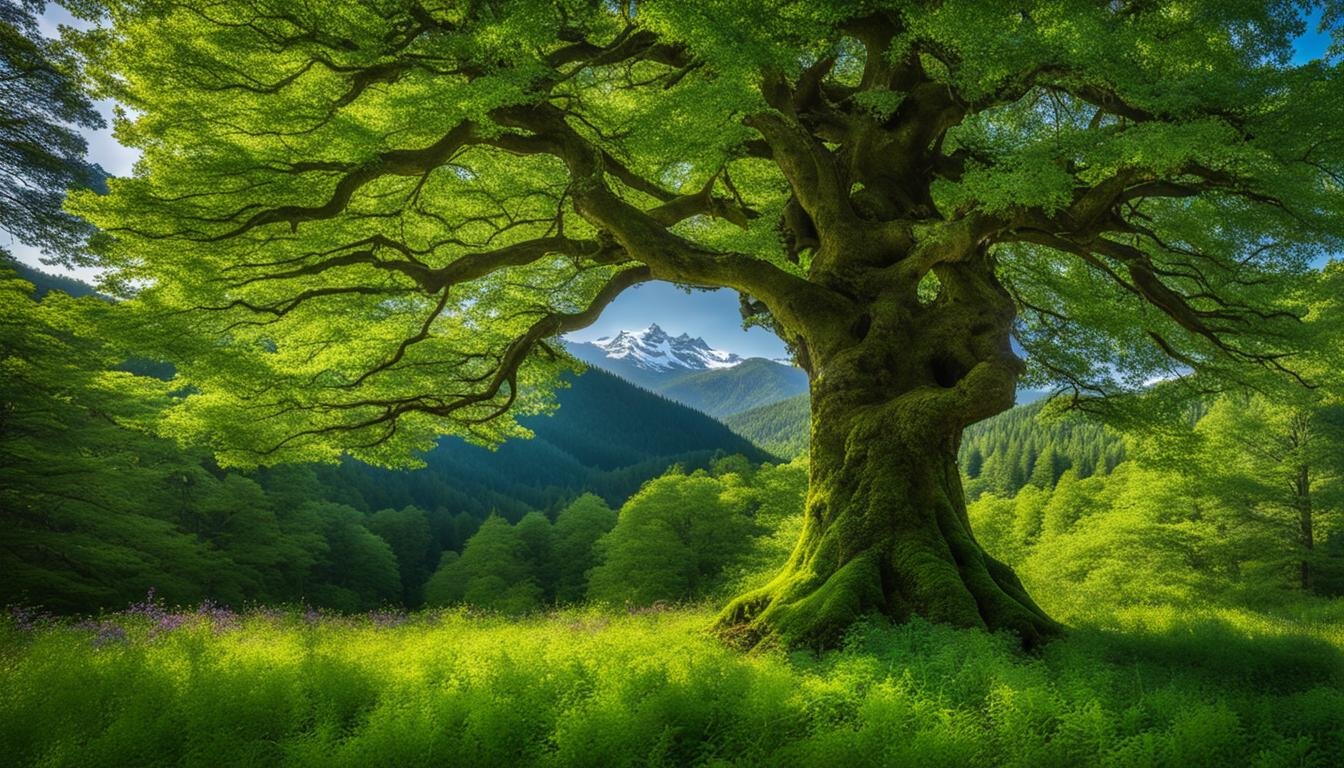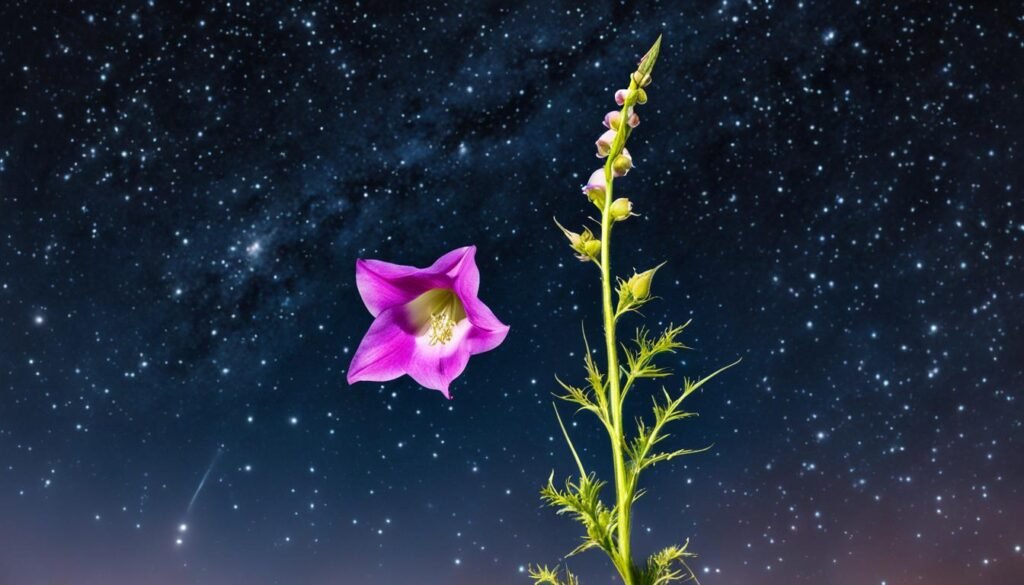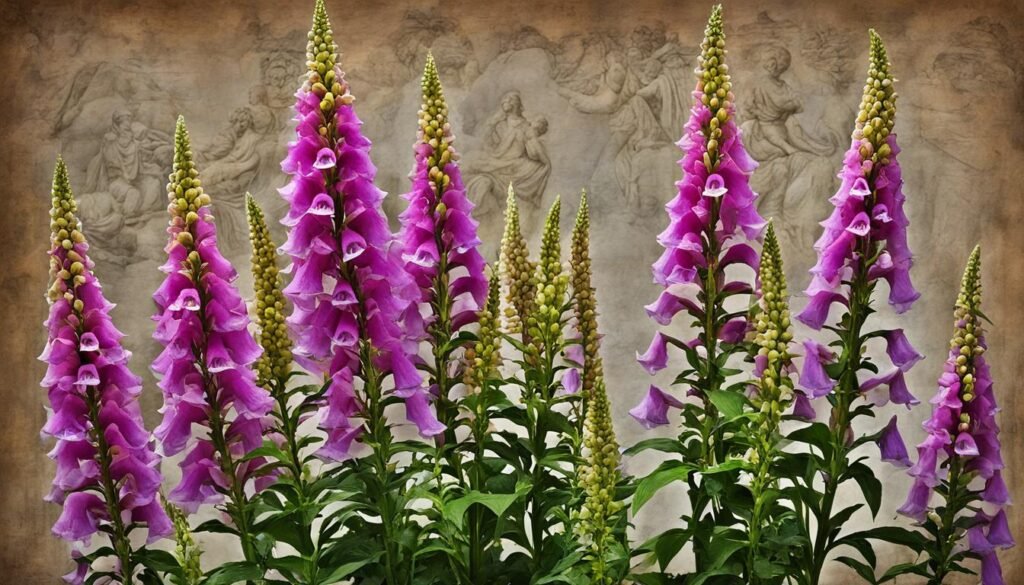Greetings! In this article, we will delve into the rich cultural significance of the beech tree in Native American culture. Native American tribes have long revered the beech tree and incorporated it into their traditions, rituals, and beliefs. Join me as we explore the fascinating world of beech trees and the profound insights they offer in Native American culture.
Key Takeaways:
- Beech trees play a vital role in Native American culture, with deep-rooted significance and symbolism.
- The beech tree has been traditionally used by Native Americans in various ways, including for medicinal purposes, crafting, and spiritual rituals.
- Native American communities hold beech trees in high regard, recognizing their cultural importance and sacred connection to nature.
- Rituals and beliefs involving beech trees are an integral part of Native American history and continue to be practiced today.
- Understanding and respecting the cultural significance of beech in Native American communities promotes cross-cultural appreciation and unity.
Introduction to Beech Trees
Beech trees, specifically Fagus Grandifolia or American Beech, are majestic forest trees that can reach heights of up to 115 feet. Their presence is often found in the company of towering hemlocks, maples, and birches. These slow-growing trees thrive in the shade, harmoniously coexisting in the lush canopies of forests.
The distinctive features of beech trees include their delicate, light green leaves. These thin foliage allows sunlight to filter through, creating a mesmerizing tapestry of light within a beech grove. This remarkable phenomenon adds to the enchanting beauty of these forest giants.

While beech trees flourish in forested areas, they are not commonly found in urban or residential environments. Instead, they thrive in their natural habitat, where they play a vital role in the ecosystem, providing shelter, food, and contributing to the overall health and biodiversity of the forest.
Edible Uses of Beech
Beech trees offer more than just their majestic beauty. They also provide edible treasures that tantalize the taste buds and offer unique culinary experiences. Let’s explore the various edible uses of beech, from its delightful seeds to its versatile leaves.
Beech Nuts: Nature’s Hidden Gems
One of the most prized edible parts of the beech tree is its seeds, known as beech nuts. These small, oval-shaped nuts are encased in a protective husk, requiring a bit of effort to extract. But the reward is well worth it. Once you peel back the husk and inner shell, you’ll discover the hidden gem inside.
“Beech nuts have a flavor that can be described as a delightful combination of a pine nut and a sunflower seed. They add a unique nuttiness to dishes and can elevate the taste profile of any recipe.”
| Uses | Benefits |
|---|---|
| Snacking | Provides a nutritious, protein-rich snack |
| Cooking | Adds a delicious nutty flavor to recipes |
| Roasting | Enhances the natural richness of the nuts |
The Versatility of Beech Leaves
While the beech nuts steal the spotlight, beech leaves also have a place in the culinary world. Especially when young, beech leaves offer a mild, slightly sweet flavor that can enhance a variety of dishes.
- Salads: Tossing a handful of fresh beech leaves into a salad adds a unique twist and a touch of freshness.
- Alternative to Tobacco: Traditionally, Native Americans have used beech leaves as an alternative to tobacco. They roll the leaves into cigarettes or pipes and enjoy the mild flavor.
- Coffee Substitute: Dried and roasted beech leaves can be used as a coffee substitute, providing a caffeine-free beverage option.
As you can see, beech trees offer a bounty of edible wonders. From the delectable beech nuts to the versatile beech leaves, these trees are a true gift to both nature and our palates.
Wood Uses of Beech
In addition to its natural beauty and cultural significance, beech wood offers a wide range of practical applications. Its dense and light-colored timber makes it a popular choice for various woodcraft projects and culinary practices. Let’s explore the diverse uses of beech wood:
1. Beech Handles and Woodcraft
Beech wood is known for its exceptional durability and strength, making it ideal for crafting handles for tools, utensils, and even furniture. The unique grain patterns and smooth texture of beech wood add an aesthetic appeal to any wooden creation.

2. Beech Wood as a Fining Agent in Brewing
Beech wood has found a surprising application in the brewing industry. Major beer manufacturers use beech wood as a fining agent to enhance the flavor of beer. The use of beech wood chips or spirals during fermentation imparts a subtle smokiness and complexity to the brew, creating a unique and enjoyable taste.
3. Beech in Culinary Practices
Beech wood offers a distinct flavor when used in culinary practices such as smoking sausages, fish, or meat. Known for its mild and sweet-smelling smoke, beech wood imparts a subtle aroma that enhances the taste of grilled and smoked food.
4. Beech in Hand Papermaking
Beech leaves, with their delicate texture and appealing color, can play a role in hand papermaking. They add a unique aesthetic quality to handmade paper, making it stand out with its natural beauty and earthy tones.
As we can see, beech wood is not only valued for its strength and versatility but also adds a touch of natural beauty to various crafts, culinary specialties, and even papermaking. Its diverse uses highlight the significance of beech trees beyond their cultural and symbolic importance.
Arborglyphs and Beech
In Native American traditions, beech trees have been chosen as a canvas for sacred tree carvings called arborglyphs. These carvings serve as powerful artifacts that honor the memories of loved ones or convey personal and cultural significance. Arborglyphs on beech trees represent the deep spiritual connection that Native Americans have with these majestic trees.
While the practice of arborglyphs is controversial due to the potential damage caused to the tree, it is a testament to the profound reverence for nature and the interconnectedness that Native American communities hold. These intricate carvings tell stories, hold memories, and serve as a link between the physical world and the spiritual realm.
Arborglyphs are a unique form of artistic expression that highlights the cultural importance and sacredness of beech trees. They offer a glimpse into the rich history and traditions of Native American cultures, allowing us to appreciate the deep spiritual connection they have with the natural world.
| Benefits of Arborglyphs on Beech Trees | Controversies of Arborglyphs on Beech Trees |
|---|---|
|
|
Arborglyphs on beech trees encapsulate the deep-rooted spirituality and cultural heritage of Native American communities. These sacred tree carvings invite us to reflect on our connection with nature, appreciate indigenous traditions, and recognize the enduring beauty and significance of beech trees in Native American history.

When examining the beech seed, the formation of a tetrahedron is visually apparent. This geometric shape carries significant meaning in sacred geometry and numerology. The tetrahedron, with its three-sided pyramid structure, represents balance, harmony, and stability. It symbolizes the sacred numbers of 2, 3, and 4, which have distinct associations in many spiritual and mystical traditions.
Sacred Numbers and Meanings
In sacred geometry, the number 2 represents duality and the balance between opposing forces. It signifies the union of opposites, such as light and dark or masculine and feminine energies. The number 3 represents creativity, expansion, and the trinity of mind, body, and spirit. The number 4 symbolizes stability, foundation, and the four elements: earth, air, fire, and water.
“The beech seed containing a tetrahedron shape highlights the sacred symbolism of the numbers 2, 3, and 4. These numbers hold deep spiritual meanings and are often associated with balance, creativity, and stability in various mystical traditions.”
Numerology and the Beech Tree
Numerology, the study of the spiritual significance of numbers, further enhances the symbolic importance of the beech seed. The number 40, which represents the typical time it takes for a beech tree to produce nuts, holds great significance in esoteric lore. It is often associated with a period of preparation and learning, as well as the beginning of advanced esoteric studies.
In numerology, the number 4 is closely related to foundational concepts, and multiples of 4, such as 40, are believed to emphasize and amplify the qualities associated with the number itself. With the beech tree taking around 40 years to reach fruit-bearing maturity, this connection between the number 40 and spiritual growth adds to the symbolism intertwined with beech trees and their seeds.
Sacred Symbolism of Beech Trees
Beyond sacred geometry and numerology, beech trees hold deep spiritual and symbolic meanings in various traditions. They are often associated with wisdom, knowledge, longevity, and protection. The beech’s smooth bark and tall stature reflect its strength, resilience, and its ability to provide shelter and comfort in a natural setting.
The beech tree’s symbolism extends beyond its physical characteristics. It serves as a reminder of the interconnectedness of all living beings and the importance of harmonious existence. Beech trees invite us to embrace the beauty of nature and recognize the spiritual teachings embedded in the natural world.
The sacred geometry and numerology represented by the beech seed add layers of meaning to the deep symbolism already associated with beech trees. These mystical connections invite us to explore the hidden wisdom found within the natural world and tap into the profound teachings that trees, such as the beech, have to offer.
Puvungna: The Last Undeveloped Native American Land
Puvungna, located on the California State University, Long Beach campus, is a sacred Native American land that remains untouched in the midst of development. Spanning 22 acres, it holds immense religious, cultural, and historical significance to local tribes, including the Juaneño Band of Mission Indians, Acjachemen Nation – Belardes, and Gabrielino/Tongva. Recognized for its sacredness, Puvungna is listed on both the National Register of Historic Places and the California Native American Heritage Commission’s Sacred Lands Inventory.
As the last remaining undeveloped Native American land in the region, Puvungna serves as a poignant reminder of the deep-rooted connection Native American tribes have to their ancestral lands. It represents a tangible piece of their history, traditions, and spirituality that is vital to their cultural identity.
| Tribes Affiliated with Puvungna |
|---|
| Juaneño Band of Mission Indians |
| Acjachemen Nation – Belardes |
| Gabrielino/Tongva |
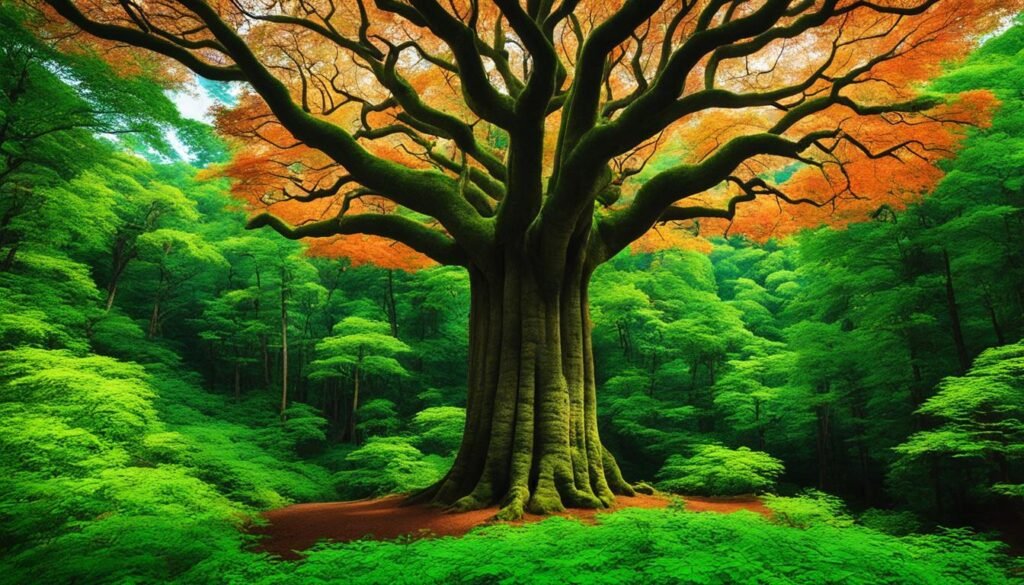
Threats to Puvungna and Indigenous Rights
CSU Long Beach has repeatedly attempted to co-opt the sacred land of Puvungna, disregarding its cultural and spiritual importance to Native American tribes. The university has dumped construction debris and sprayed pesticides on the site, violating state law AB 52, which requires consultation with tribal governments before taking actions that undermine the integrity of sacred lands.
The desecration of Puvungna threatens the rights and traditions of Native Americans and their connection to the land. The violation of state law and the destructive actions of CSU Long Beach pose a significant threat to this sacred land.
It is essential to recognize the significance of protecting Puvungna and respecting the rights of Indigenous communities. The preservation of sacred sites is not only a matter of legal obligation but also a moral imperative that demonstrates a sincere commitment to honoring Native American history and cultural heritage.
“The desecration of Puvungna violates the sanctity of our ancestors’ resting place and disrupts our spiritual practices. We demand that CSU Long Beach cease its damaging actions and respect the sacredness of Puvungna.”
Violation of State Law
The dumping of construction debris and the use of harmful pesticides by CSU Long Beach directly violate state law AB 52. This law mandates that tribal governments be consulted in decisions impacting sacred lands. By disregarding this law, the university has shown a lack of respect for Native American rights and traditions.
Threat to Sacred Land
The actions of CSU Long Beach pose a significant threat to the integrity of Puvungna as sacred land. Construction debris and pesticides not only damage the natural environment but also disrupt the spiritual connection Native Americans have to this site. The continued disregard for the significance of Puvungna jeopardizes the cultural heritage and traditional practices of Indigenous communities.
| Threats | Actions |
|---|---|
| Construction Debris | Dumping of construction debris on the sacred land |
| Soil Dumping | Violating the sanctity of Puvungna through improper soil dumping |
| Violation of State Law | Disregarding state law AB 52 by not consulting tribal governments |
| Threat to Sacred Land | Undermining the cultural and spiritual importance of Puvungna |
The threats to Puvungna and the violation of Indigenous rights highlight the urgent need for action to protect and preserve sacred lands. It is crucial for CSU Long Beach to rectify its actions, engage in meaningful consultation with tribal governments, and work towards the restoration and permanent protection of Puvungna.

Call for Protection and Respect
The Native American tribes culturally affiliated with Puvungna, particularly the Juaneño Band of Mission Indians and the Acjachemen Nation – Belardes, are deeply concerned about the current state of the sacred land. They emphasize the urgent need for restoration to repair the damaged habitat and preserve its cultural and ecological integrity.
As a first step, the removal of construction debris is paramount to ensure the restoration process can commence. Clearing the debris will enable the healing of the land and create a conducive environment for indigenous plant species to thrive once again. Additionally, they advocate for the hiring of an indigenous plant specialist who can guide the reestablishment of native vegetation in a manner that respects the sacredness of the area.
The tribes are also calling upon CSU Long Beach to establish a Memorandum of Understanding (MOU) that unequivocally commits to the permanent protection of Puvungna. This MOU would serve as a formal agreement between the university and the tribal governments, outlining strategies and guidelines for safeguarding the sacred land for future generations. Improved consultation and communication protocols between CSU Long Beach and the tribes are crucial in ensuring that decisions regarding the land respect Native American rights and are made collaboratively.
The permanent protection of Puvungna not only honors the cultural heritage and spiritual significance attached to the land but also demonstrates a commitment to upholding Native American rights. By valuing the voices and concerns of the Juaneño Band of Mission Indians, Acjachemen Nation – Belardes, and other culturally affiliated tribes, the preservation of Puvungna communicates a profound message of cultural respect and the recognition of Native American sovereignty.
Steps for Protecting Puvungna
| Steps | Description |
|---|---|
| 1 | Removal of construction debris |
| 2 | Hiring of an indigenous plant specialist |
| 3 | Establishment of a Memorandum of Understanding |
| 4 | Improved consultation and communication |
Note: The table outlines the recommended steps for protecting and respecting Puvungna, as advocated by the Juaneño Band of Mission Indians, Acjachemen Nation – Belardes, and other culturally affiliated tribes. These steps encompass environmental restoration, cultural preservation, and collaborative decision-making processes.
The Revitalization of Native American Beliefs
Native American spirituality and beliefs have been undergoing a revitalization in recent years. Efforts are being made to pass down traditional beliefs and practices to new generations through the oral tradition and the inclusion of tribal members in ceremonies and gatherings. This resurgence of Native American beliefs promotes cultural preservation, spirituality, and the celebration of diverse tribal cultures.
The Importance of Oral Tradition
One of the key elements in the revitalization of Native American beliefs is the preservation and transmission of knowledge through oral tradition. Native American tribes have long relied on storytelling, spoken language, and oral histories to pass down sacred teachings, cultural practices, and spiritual beliefs from one generation to the next. Through storytelling, tribal members learn about their ancestors, cultural values, and the spiritual significance of their traditions.
“The oral tradition allows us to maintain a strong connection with our ancestors and their wisdom. It is through storytelling that we learn about our place in the world and the spiritual practices that guide our lives.” – Chief White Cloud, Navajo Nation
Inclusion and Participation in Ceremonies
To ensure the continued vitality of Native American beliefs, tribal communities are actively involving younger generations in ceremonies and gatherings. Children and adolescents are encouraged to participate in rituals, dances, and other spiritual practices to strengthen their connection to their culture and heritage. The active involvement of youth in Native American traditions fosters a sense of belonging, spirituality, and pride in their tribal identity.
Cultural Preservation and Adaptation
While the revitalization of Native American beliefs emphasizes the preservation of traditional practices, it also acknowledges the need for adaptation to contemporary realities. Native American communities are finding ways to blend ancient traditions with modern contexts, allowing for the evolution and growth of their spiritual practices while maintaining their core beliefs and values. This adaptive approach ensures that Native American spirituality remains relevant and meaningful in today’s world.
Celebration of Tribal Diversity
The revitalization of Native American beliefs goes hand in hand with the celebration of tribal diversity. Each Native American tribe has its own unique spiritual practices, rituals, and beliefs. By embracing and honoring these diverse traditions, Native American communities foster a deeper understanding and appreciation for the rich tapestry of tribal cultures. This celebration of diversity not only strengthens tribal identity but also promotes unity among Native American nations.
The Power of Native American Spirituality
Native American spirituality holds profound wisdom, offering insights into humanity’s connection to the natural world, the intergenerational transmission of knowledge, and the pursuit of harmony and balance in life. The revitalization of Native American beliefs ensures that these spiritual teachings continue to inspire individuals, promoting personal growth, cultural preservation, and a deeper sense of belonging.
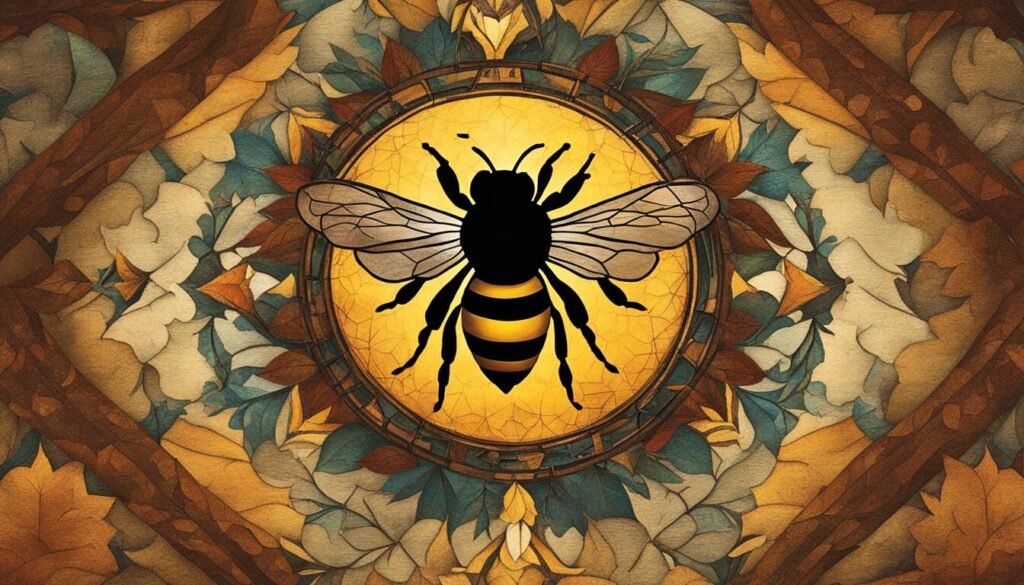
| Benefit | Revitalization of Native American Beliefs |
|---|---|
| Cultural preservation | The revival of Native American beliefs safeguards tribal traditions, languages, and cultural practices for future generations |
| Spiritual connection | The revitalization of beliefs fosters a deeper spiritual connection to ancestral wisdom, nature, and the community |
| Empowerment | By embracing Native American beliefs, individuals experience a sense of empowerment, identity, and pride in their heritage |
| Unity and solidarity | The celebration of tribal diversity cultivates unity, mutual respect, and solidarity among Native American communities |
| Intergenerational transmission | The oral tradition ensures that ancestral knowledge and spiritual teachings are passed down to future generations |
The Multifaceted Nature of Native American Religions
Native American religions are incredibly diverse, with over 574 recognized tribes in the United States alone. Each tribe has its own unique culture, spirituality, and set of beliefs. There is no homogenous Native American religion, and it is important to recognize and respect the diversity and individuality of each tribe’s spiritual practices.
Native American religions are deeply intertwined with cultural traditions and reaffirm the connection between spirituality and everyday life. These belief systems encompass a wide range of spiritual practices, including rituals, ceremonies, storytelling, and reverence for nature.
One key aspect of Native American religions is tribal spirituality. Tribal spirituality emphasizes the interconnectedness of all living beings and the importance of maintaining a harmonious relationship with the natural world. This spiritual connection to nature is reflected in various practices, such as honoring and respecting ancestral lands, performing ceremonies to seek guidance and blessings from spiritual beings, and using natural elements like herbs and stones for healing purposes.
“The diversity of Native American religions is a testament to the richness and complexity of indigenous cultures. It is crucial to approach each tribe’s spiritual practices with an open mind, appreciating the depth of knowledge and wisdom embedded within their traditions.”
Moreover, Native American religions often prioritize communal well-being and collective harmony. Spiritual practices are often carried out within the context of community gatherings and shared sacred spaces. These rituals and ceremonies serve to strengthen the bonds between tribe members, unite the community in common aspirations, and foster a sense of belonging and identity.
The multifaceted nature of Native American religions reflects the importance of cultural preservation and recognizing the distinct spiritual heritage of each tribe. By acknowledging and respecting this diversity, we contribute to the ongoing legacy of Native American spirituality and promote cultural understanding and appreciation.
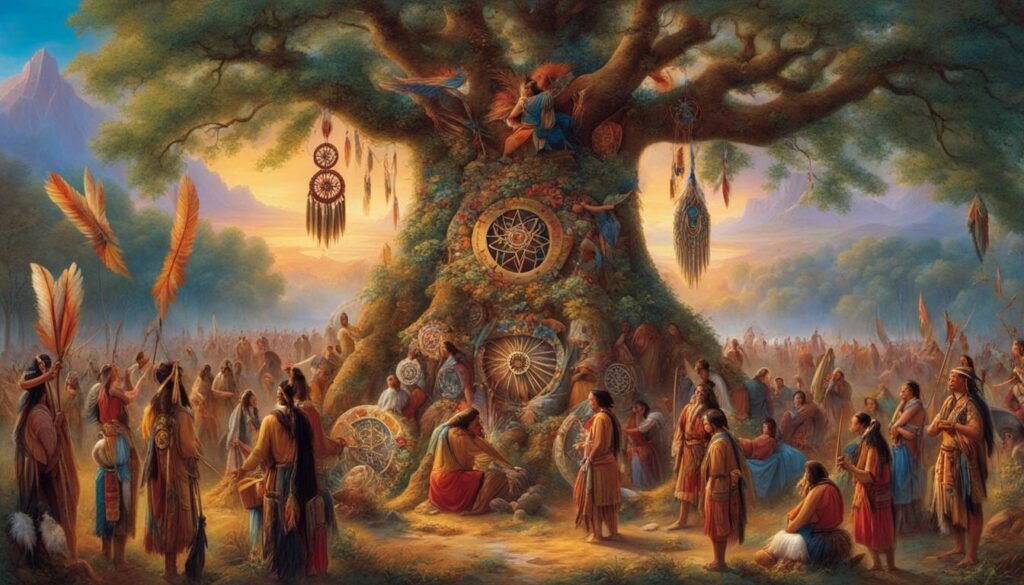
Recognizing the Diversity of Native American Religions
It is crucial to understand that Native American religions are not interchangeable or monolithic entities. Each tribe has its own distinct belief systems, often shaped by their unique histories, geographical locations, and cultural practices. This diversity can be observed in the various creation stories, sacred rituals, and spiritual symbols that are passed down through generations.
For example, the Navajo tribe’s spiritual practices revolve around the concept of “hózhǫ́ǫ́gį́į́,” which encompasses balance, harmony, and beauty. The Cherokee Nation places importance on the “Aniyvwiya,” believing that everything in existence is interconnected and possesses a spiritual essence. In contrast, the Lakota tribe places a strong emphasis on the “Wakȟáŋ Tȟáŋka” (the Great Mystery), a sacred force that permeates all aspects of life.
- The diverse beliefs and practices emphasize the interconnectedness of all living beings and the intricate relationship between humans, animals, plants, and the spiritual realm.
- The spiritual practices include ceremonies, dances, singing, drumming, vision quests, and the use of sacred objects.
- The respect and reverence for nature, land, and ancestral traditions are vital aspects of Native American religions.
By recognizing and appreciating the multifaceted nature of Native American religions, we can foster a deeper understanding and respect for the cultural heritage of indigenous communities. This recognition is essential for promoting cultural preservation, advocating for indigenous rights, and strengthening the bonds of unity and mutual respect among all people.
The Integration of Native American Spirituality
Native American spirituality is deeply intertwined with daily life. There is no separation between the spiritual and the real world. This belief emphasizes the interconnectedness of all living beings and the essential connection to the natural world. Native Americans have a profound connection to nature, considering themselves part of a larger whole, promoting a sense of unity and reverence for the Earth.
The Connection to the Natural World
In Native American spirituality, the natural world is seen as sacred, and every living being is regarded as interconnected. The land, animals, plants, and elements are all honored as spiritual entities. This profound connection to nature is not limited to specific rituals or practices but is integrated into everyday life.
“The land is our mother. Our connection to the land is inherent and sacred. We honor and respect all things that grow, walk, fly, and swim. We recognize our responsibility to care for the Earth and preserve it for future generations,” says Chief Joseph White Eagle, a spiritual leader of the Lakota Sioux Tribe.
This deep connection to the natural world fosters a sense of responsibility and stewardship towards the environment. Native Americans recognize that their actions impact not only themselves but also the interconnected web of life.
Integration into Daily Life
Native American spirituality is not confined to specific ceremonies or designated places of worship. It seamlessly integrates into every aspect of daily life, permeating thoughts, actions, and relationships.
“My ancestors taught me that spirituality is not separate from our daily lives but is woven into the fabric of who we are. It is in the way we approach our work, care for our families, and interact with others. It is a constant reminder of our connection to something greater than ourselves,” shares Cynthia Blackfeather, a member of the Navajo Nation.
Native Americans carry their spiritual beliefs with them, whether they are tending to the land, preparing meals, or engaging in community activities. The integration of spirituality into daily life provides a sense of purpose and a profound appreciation for the interconnectedness of all things.
Quotes from Native American Leaders
“We do not walk a spiritual path separate from the physical world. Our spirituality is not something we turn on or off. It is who we are, and it guides us in all that we do,” emphasizes Chief Arvol Looking Horse, a respected spiritual leader of the Lakota Sioux Nation.
Connecting with the Sacred
Native American spirituality provides a framework for perceiving the sacred in all aspects of life. The integration of the spiritual and the mundane fosters a deep sense of gratitude, respect, and harmony with the world around them.
- By nurturing a connection to the natural world, Native Americans find solace, wisdom, and guidance.
- By honoring their ancestors and the traditions passed down through generations, they strengthen their cultural identity and sense of belonging.
- By practicing gratitude and mindfulness, they cultivate a deeper appreciation for the gifts of life.
- By engaging in community rituals and ceremonies, they deepen their bonds with others and strengthen their spiritual connection.
Native American spirituality is a way of living that encourages individuals to be conscious of their actions, thoughts, and relationships. It serves as a constant reminder of our interconnectedness and the importance of honoring the natural world.
| Native American Spirituality: | Integration into Daily Life |
|---|---|
| Interconnectedness with all living beings | Being mindful of the impact of actions on others |
| Sacredness of the natural world | Respecting and honoring the environment |
| Carrying spirituality in all aspects of life | Seamlessly integrating beliefs into daily activities |
| Guidance from ancestors and traditions | Deepening cultural identity and sense of belonging |
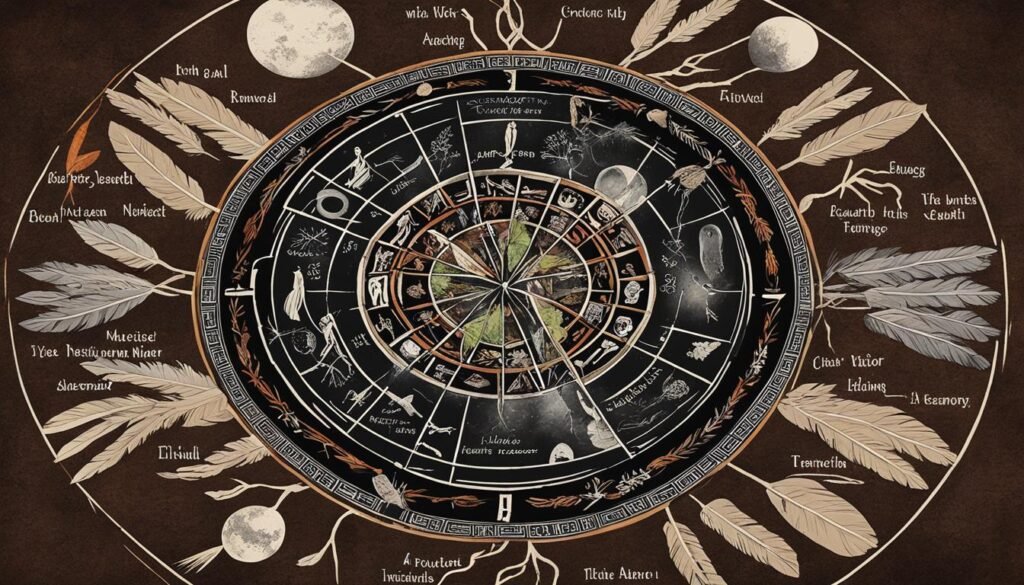
| Tribes | Beliefs about Death |
|---|---|
| Navajo | Believe in multiple afterlife realms, with the possibility of reincarnation |
| Hopi | Believe in a journey to ancestral spirits and subsequent rebirth |
| Lakota Sioux | Believe in a spirit’s transition to the spirit world with potential return to guide the living |
Conclusion
Native American spirituality and the cultural preservation of their traditions are of tremendous importance and hold valuable insights for all individuals. By recognizing and respecting the diverse spiritual practices of Native American tribes, we contribute to the preservation of their rich cultural heritage and gain a deeper understanding of the interconnectedness of all living beings.
It is crucial to acknowledge the significance of native beliefs and rituals and to promote cultural respect and harmony. Through this recognition, we honor the deep spiritual connections of Native American communities and foster a greater appreciation for their unique contributions to our collective human experience.
Beech trees, with their sacred role in Native American history, continue to symbolize the deep spiritual connections that these communities share with the natural world. By acknowledging the cultural significance of beech trees, we pay tribute to the profound spiritual teachings and traditions that have been passed down through generations.
FAQ
What is the significance of beech trees in Native American culture?
Beech trees hold significant spiritual and cultural importance in Native American culture.
What are some traditional uses of beech by Native Americans?
Native Americans used beech wood for making drums, handles, and other tools. Beech leaves were also utilized in hand papermaking.
How are beech nuts and leaves used in Native American communities?
Beech nuts can be eaten after peeling back the husk and inner shell, and beech leaves can be enjoyed in salads or used as an alternative to tobacco or coffee substitute.
Are there any rituals or symbolism associated with beech trees in Native American traditions?
Beech trees have been a popular choice for carving messages and symbols in Native American traditions, serving as artifacts of cultural significance.
What is the symbolic significance of beech seeds in Native American culture?
Beech seeds hold symbolic significance in sacred geometry and numerology, representing the sacred numbers 2, 3, and 4.
What is the significance of Puvungna in Native American history?
Puvungna is the last remaining undeveloped sacred Native American land on the California State University, Long Beach campus, holding religious, cultural, and historical significance to local tribes.
What threats does Puvungna currently face?
Puvungna has faced desecration through the dumping of construction debris and the violation of state law AB 52, which requires consultation with tribal governments before taking actions that undermine the integrity of sacred lands.
What is the call to action for protecting Puvungna and respecting indigenous rights?
The tribes culturally affiliated with Puvungna call for the restoration of the damaged habitat, removal of construction debris, permanent protection of the land, and improved consultation and communication with tribal governments.
What is the current state of Native American beliefs and spirituality?
Native American beliefs and spirituality have been undergoing a revitalization, with efforts to pass down traditional beliefs and practices and celebrate diverse tribal cultures.
How are Native American religions intertwined with cultural traditions?
Native American religions are deeply intertwined with cultural traditions, with each tribe having its own unique culture, spirituality, and set of beliefs.
What is the integration of native spirituality into daily life?
Native American spirituality is integrated into every aspect of existence, emphasizing the interconnectedness of all living beings and the importance of respecting and honoring the natural world.
What are some common threads in Native American religions?
Native American religions often involve beliefs about death, planting and harvesting ceremonies, and the concept of a Great Spirit or sacred mystery.
How can recognizing the importance of native beliefs and rituals promote cultural respect?
By recognizing and respecting the diverse spiritual traditions of Native American tribes, we contribute to the preservation of their culture and foster a deeper understanding of the interconnectedness of all living beings.
Source Links
- https://calmatters.org/environment/2020/08/native-american-sacred-land-on-csu-long-beach-campus-should-be-permanently-protected/
- https://www.powwows.com/native-american-religion-and-spirituality-common-threads-unique-beliefs-and-too-many-misconceptions/
- https://thedruidsgarden.com/2015/07/06/sacred-tree-profile-american-beech-fagus-grandiflora-magic-medicine-and-qualities/
